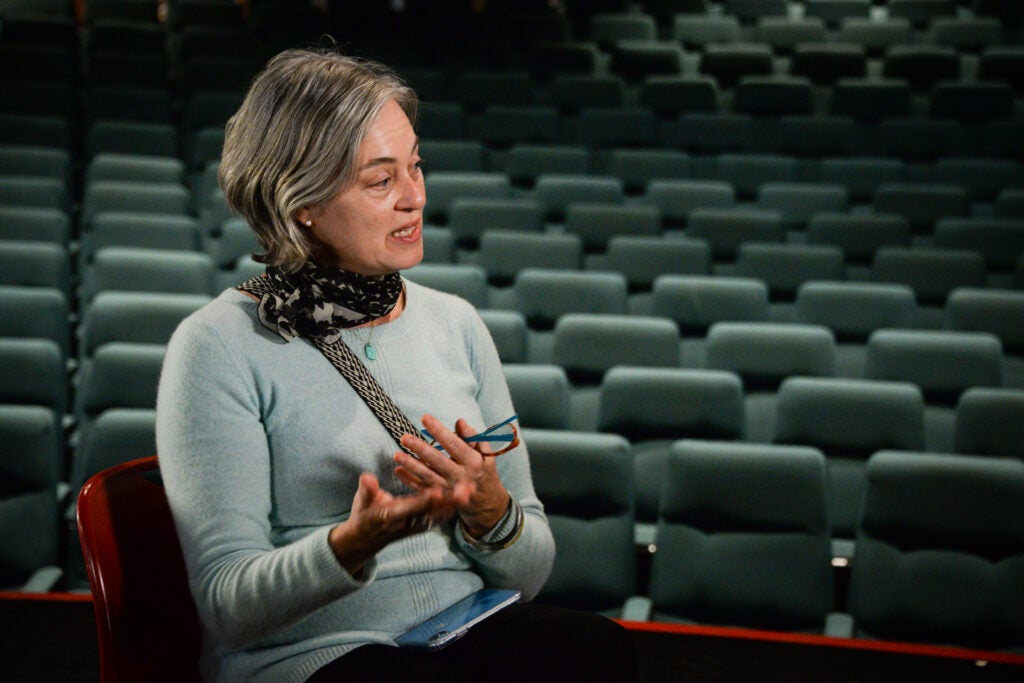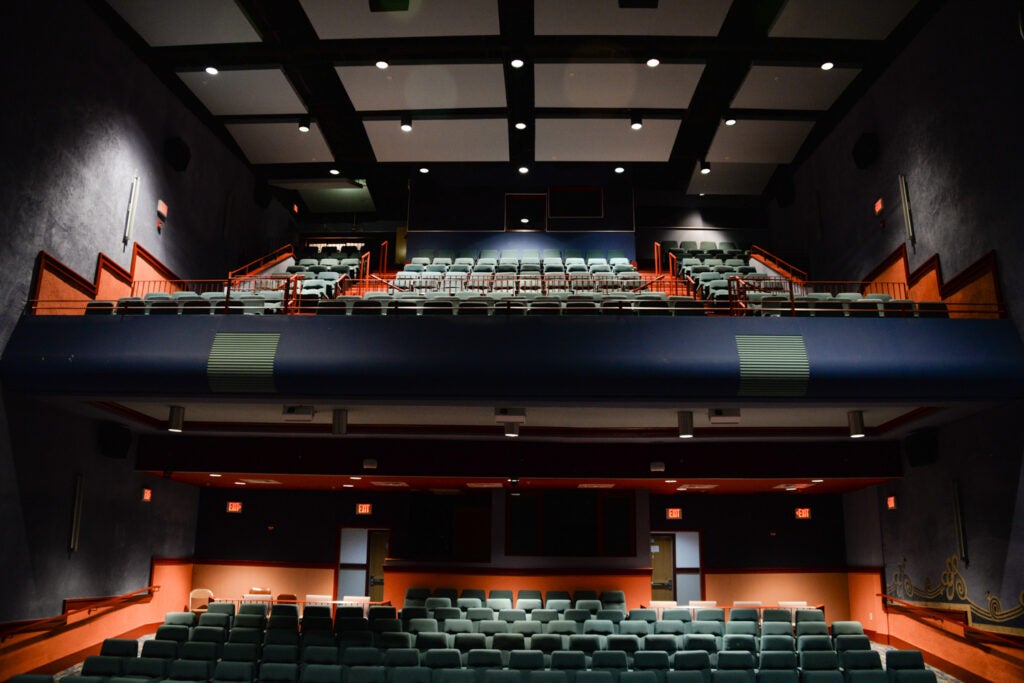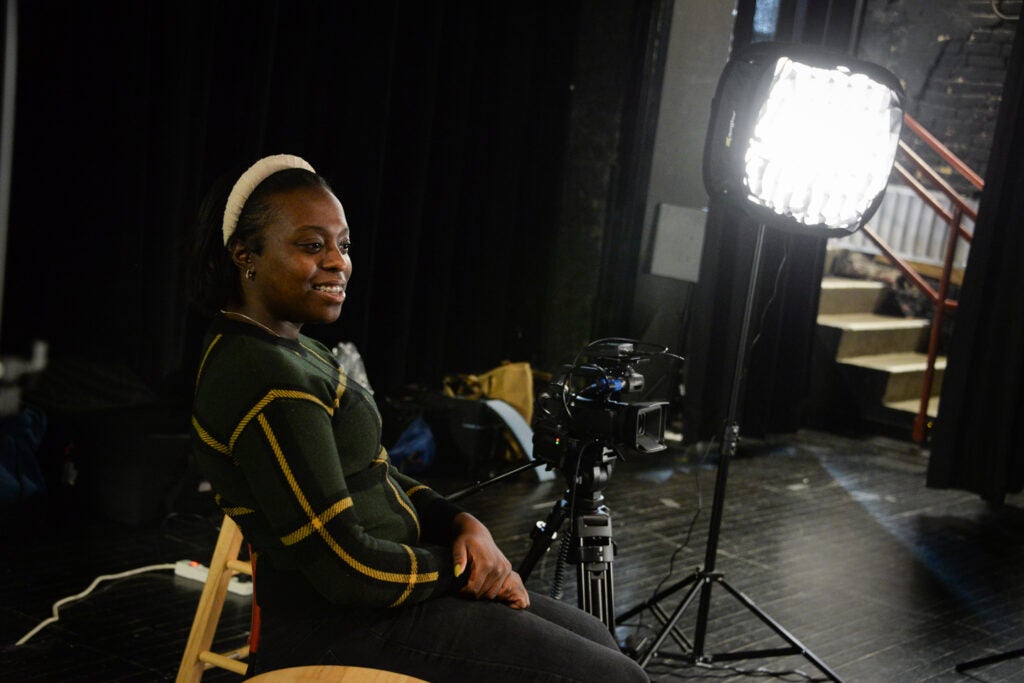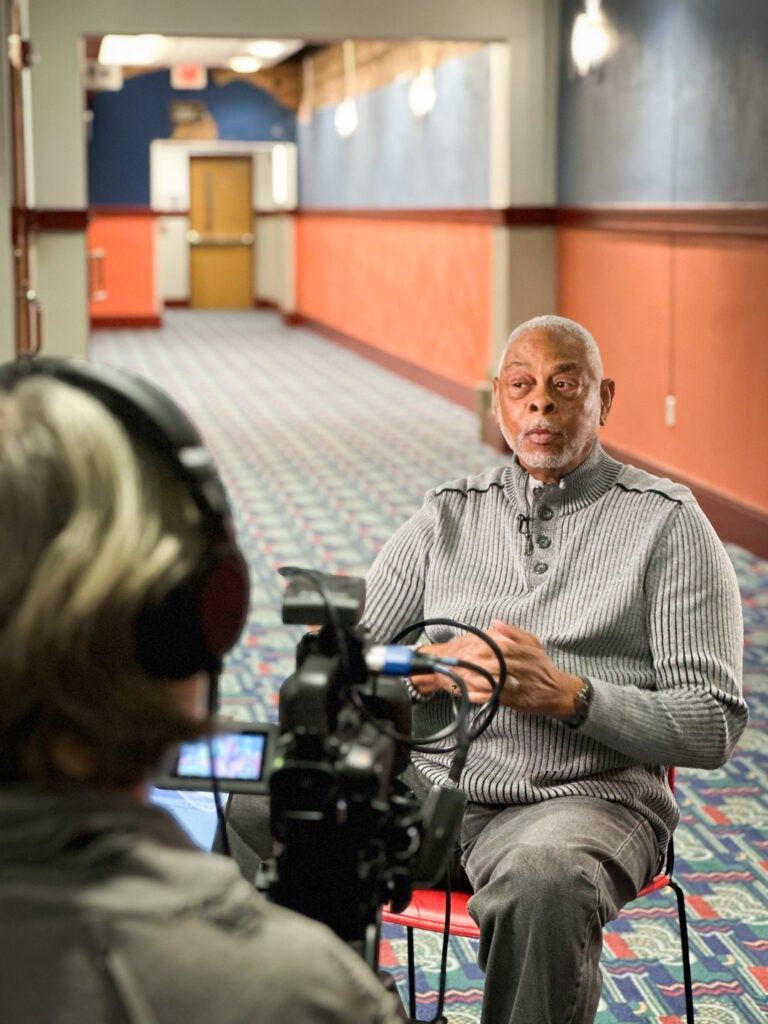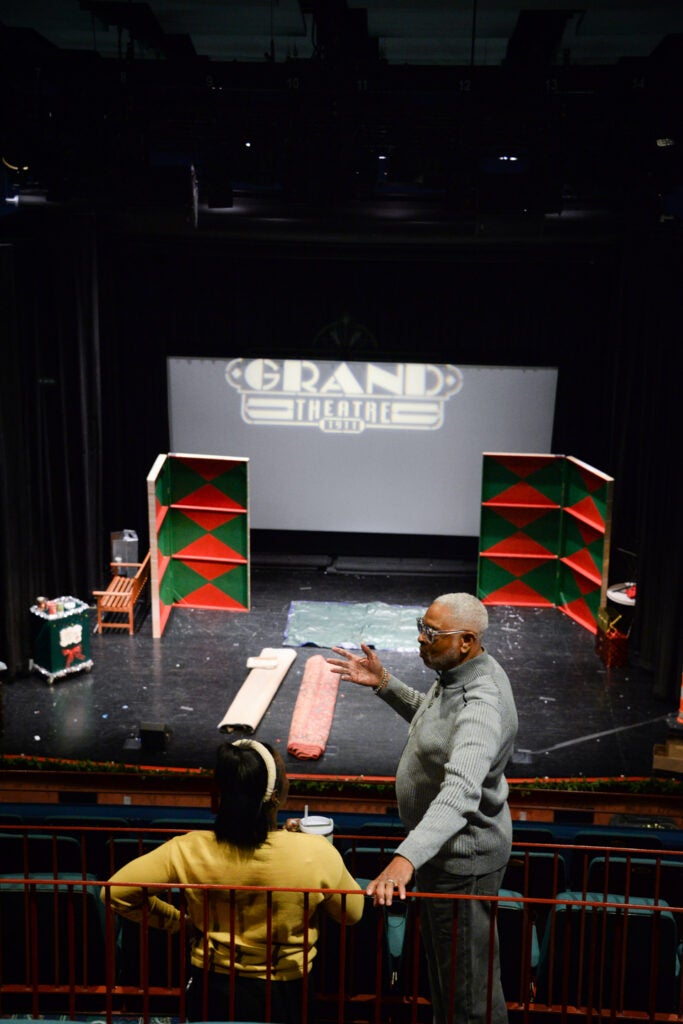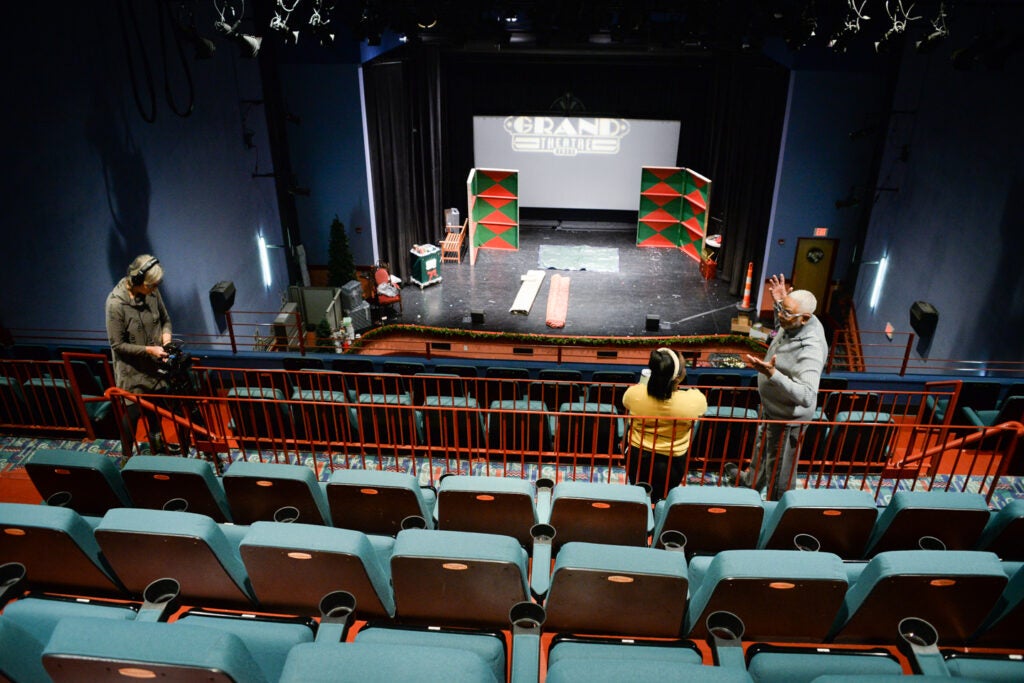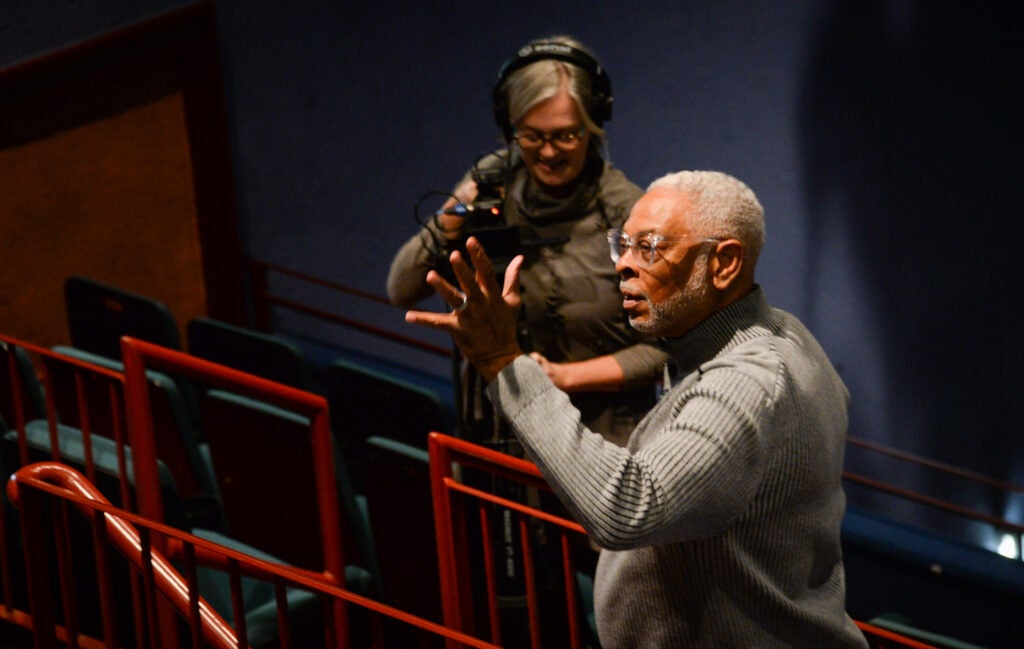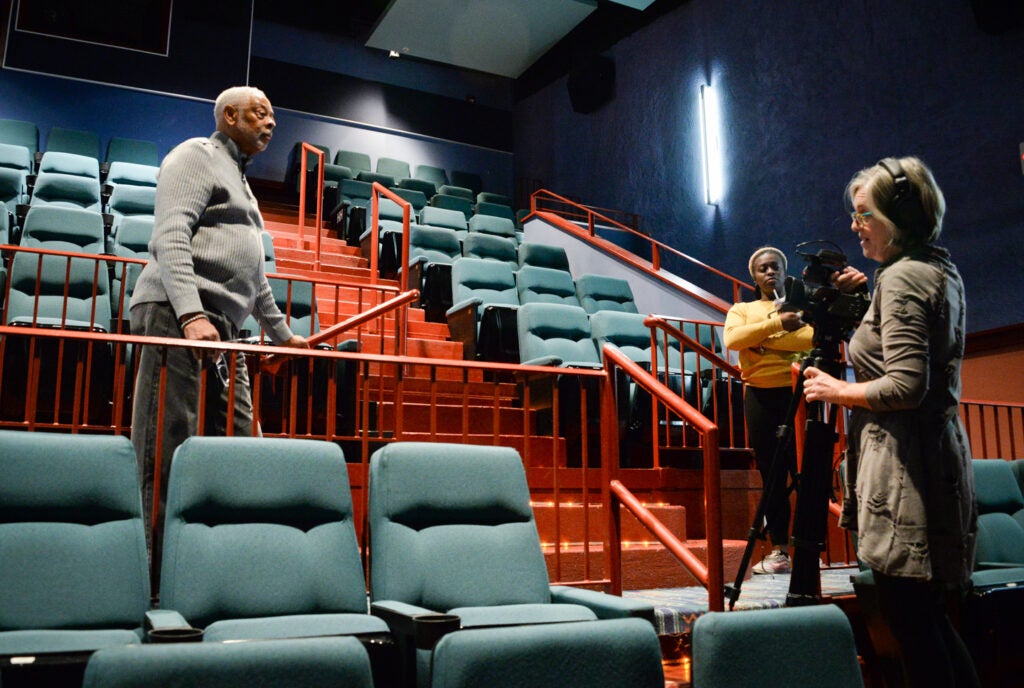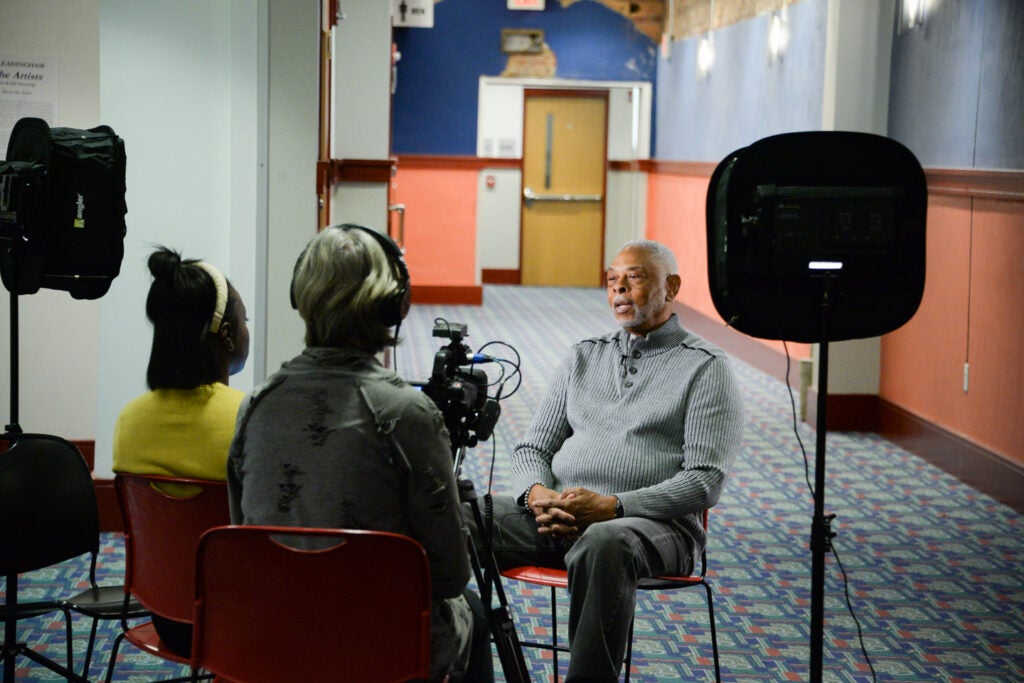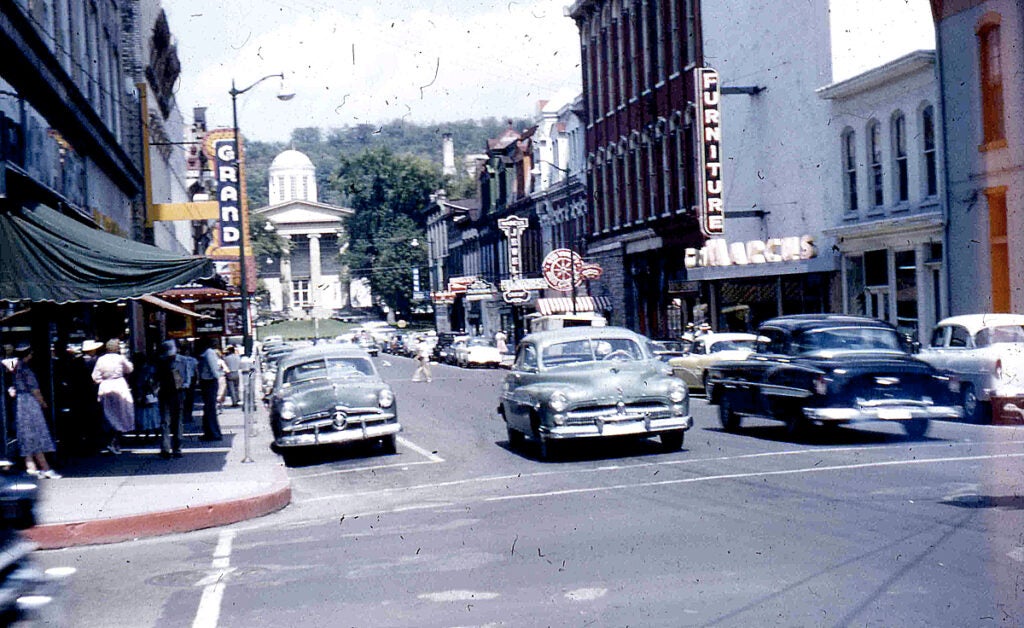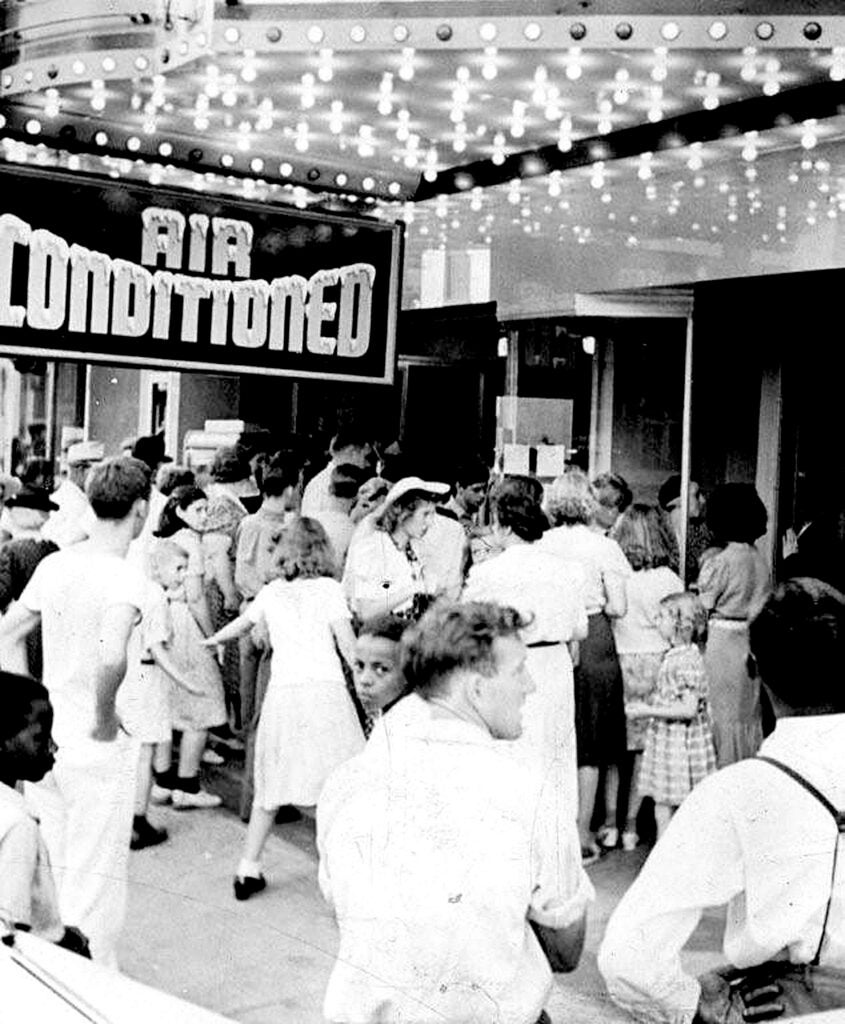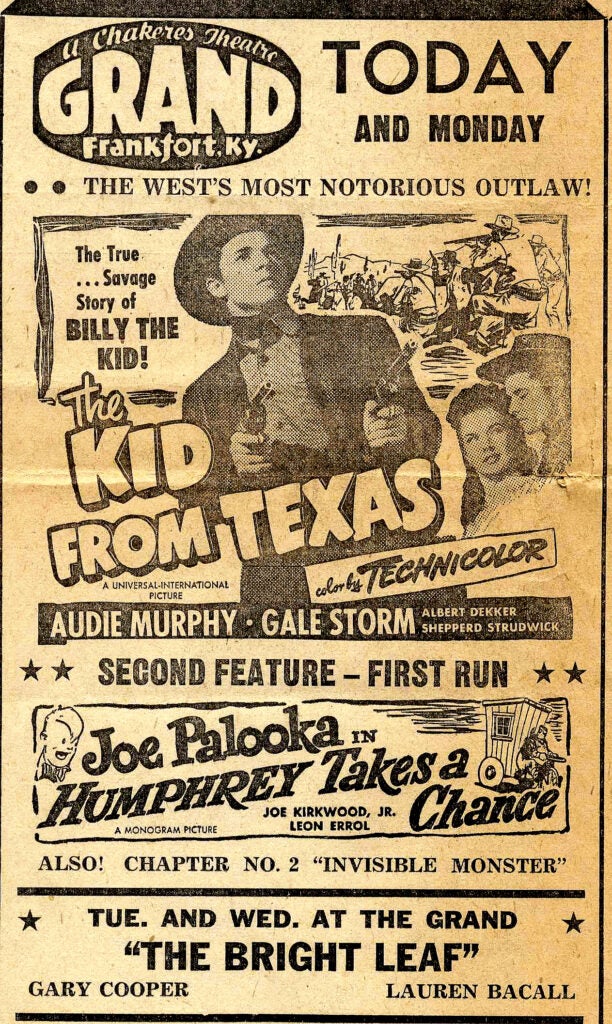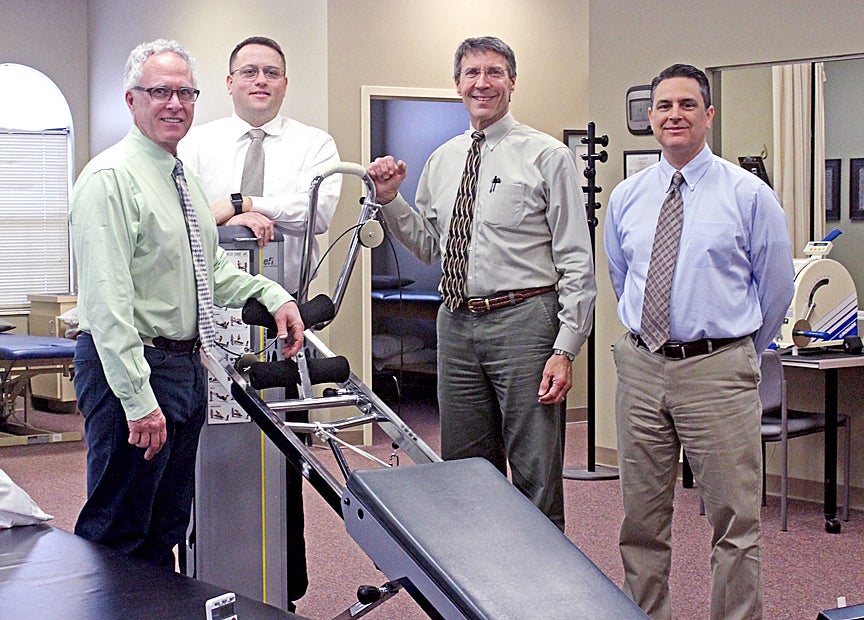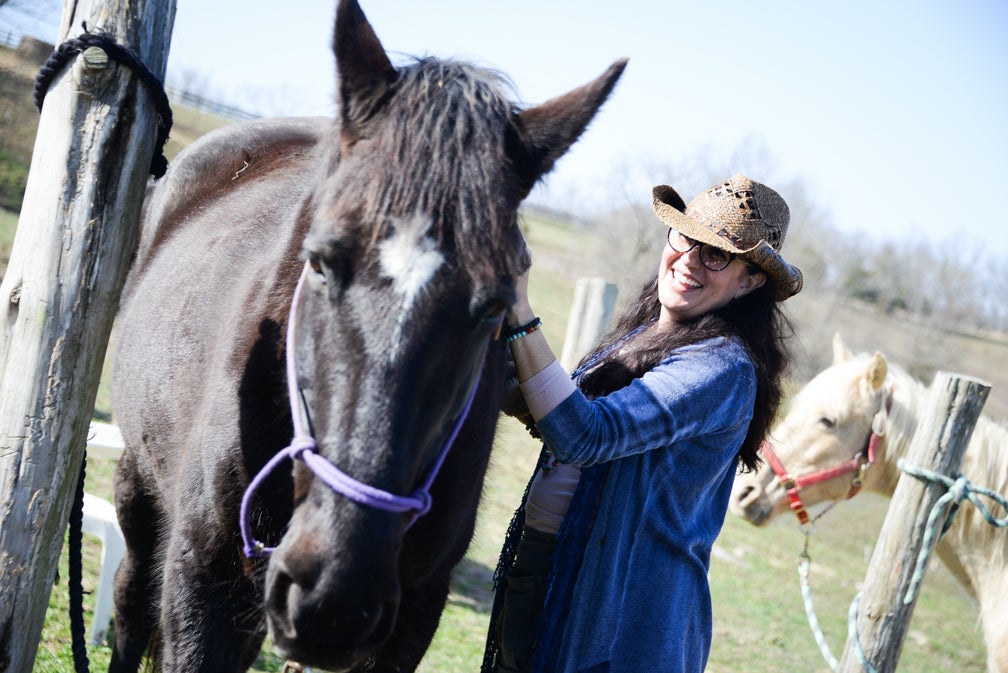“Life can only be understood backwards: but it must be lived forwards.” — Soren Kierkegaard
We learn history via a wide variety of sources — by reading books, viewing photographs, through dedicated and fact-centered research and reporting, and through newspaper clippings and newsreels, to name a few. However, among the most detailed and personal reportages of the actual events of yesterday may well be the retelling of moments from the past by those who actually lived through and, to one degree or another, participated in the them. Individuals who found their lives forever impacted and changed by these experiences.
Such retelling of a significant segment of Frankfort’s past is the goal of “Stories from the Balcony,” a series of interviews produced and filmed by Joanna Hay, supported by the Grand Theatre and its board, along with public and private funding and donations, and reflected through the unique lens of the Grand.
Joanna first envisioned the documentary, sponsored in part by the Kentucky Oral History Society, as a documented journey into Frankfort’s past, specifically the mid-20th century when segregation ruled much of our country, told through the real-life experiences of people, Black and white, who personally lived through those days.

During those years, and the decades that preceded them, segregation based on race was either the practice and/or the prevailing law throughout much of the United States, including Kentucky, and, Frankfort. One example of such segregation was that Black individuals of all ages, when they were allowed to purchase tickets, were required to sit in the balconies of Frankfort’s movie theaters prior to the Civil Rights Act of 1964, later supported by the Kentucky Civil Rights Act of 1966.
Phase I of this impactful project began in 2006 when Joanna conducted a series of filmed interviews with local residents who had personally attended the showing of a film/films at the Grand during the 1940s, 50s and early 60s when racial segregation at “the movies” was accepted to a large degree by most people as simply a normal business practice, a way of life. These fascinating interviews can be found online at https://vimeo.com/31147710.
Phase II, which is currently being filmed, is designed to expand on Phase I. Joining Joanna for this round of films is Katima Smith-Willis, who is serving as the interviewer for this round of “Stories from the Balcony.” Katima’s participation is sponsored by the Kentucky Foundation for Women, whose stated goal is “promoting positive social change by supporting varied feminist expression in the arts.” A historical timeline for the current filming was created by the project’s historian and researcher, Kayla Bush.
Katima notes that one of her goals as interviewer for “Stories from the Balcony” is to search for, find and elicit the real feelings of individuals being interviewed; to uncover and reveal, via filmed interviews, the raw and authentic.
She also notes, with a wry smile, that the interviewing process has been an educational experience for her, in multiple ways. For example, during our interview, Katima revealed she has learned that — as the stories being shared are so interesting and informative — she must focus on remaining cognizant of the fact that she is the interviewer and “avoid becoming too much of a detailed listener.”
Katima further shares that she has discovered she needs to “think through all of her questions in detail beforehand, tread lightly on judgements, and find ways to keep the conversations going.”
In the early of its existence, the Grand, originally constructed as a “shotgun” vaudeville house in 1911 with some 135 seats, was closed to Blacks. As the film world grew and developed, movie screens were added, and when the “Talkies” began to replace silent films, the Grand was wired for sound. In 1941, under the ownership of Chakeres Theatres, the Grand underwent a major renovation, with the original rear of the building becoming the entrance and a new 600 seat theatre being constructed.
Operated by Chakeres until it closed in 1966, the Grand showed primarily Grade B movies, mostly westerns, detective and noir films. Following the 1941 renovation, Blacks, who had previously seen movies from the balcony of the old Capitol Theatre, were shifted to the balcony of the Grand. Frankfort native George Wolfe, a renowned playwright and director, once remarked that he recalled going to the Capitol Theatre to see the 1961 film, “101 Dalmatians,” only to be turned away because he was Black.
What was it like, you may be asking yourself, to live in America during the period in which those currently being interviewed for the documentary saw movies at the Grand? Say from the end of World War II to the passage of the Civil Rights Act of 1964. What key events happened during those years?
By the end of 1945, when the allies emerged victorious over Germany and Japan, America had become the most powerful and influential country in the world. The Truman administration was followed by eight years of Eisenhower, then the foreshortened term of John F. Kennedy, and finally the early Lyndon Johnson years.
For many Americans who lived through it all, or several of those years, they were America’s “Golden Years” — years of “I Like Ike,” “Leave It to Beaver,” and the New York Yankees’ glory seasons featuring Mickey Mantle, Yogi Berra and Whitey Ford, not to mention the vast expansion of the McDonald’s franchise by Ray Kroc.
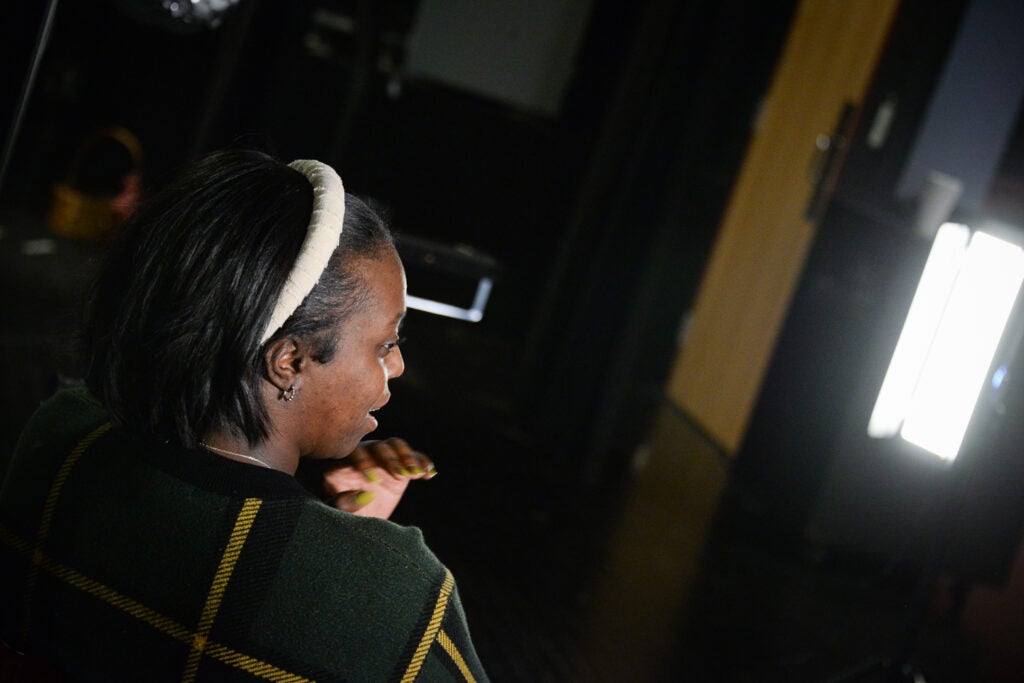
However, those very same years also saw the rise of McCarthyism, the Korean War, the murder of Emmitt Till, Rosa Park’s monumental bus ride, the Greensboro sit-ins, a steadily growing American involvement in the Vietnam War and the assassination of JFK. FRANK. readers of a certain age may recall seeing water fountains, waiting rooms and restrooms designed “Whites Only” or “Colored” during this era.
It was in this America that segregation, based solely on race, was an accepted way of life in many parts of our country. Several interviewees in both Phase I and II of “Stories from the Balcony” have noted this important fact, frequently stating that requiring Blacks, of all ages, to sit in the balcony was simply “the way it was back then.”
This doesn’t mean that Black individuals didn’t resent being shuffled off to the balcony. While they did enjoy comfortable seating and their own snack stand where they could buy sodas, candy and popcorn, they naturally felt slighted by being automatically relegated to the remote region of the Grand. One way several recent interviewees noted they responded, usually near or at the end of the film they had come to see, and in an essentially non-violent manner, was to toss some of their popcorn, and occasionally the box or bag it came in, over the balcony and onto the white patrons below.
During the filming of “Stories form the Balcony,” certain individuals being interviewed have also expressed anger, indignation, even a degree of sadness over the discrimination that was so common it was virtually all-encompassing throughout the vast majority of their days of going to the movies at the Grand.
Of course, each interviewee remembers their childhood experiences at the Grand differently. Even siblings don’t share precisely the same memories. Joanna notes that during the filming of the documentary, three siblings, each of whom frequented the Grand but at different times, had been interviewed and that each of the three had a different perspective on the segregation they personally experienced, and how they had navigated those turbulent times. Furthermore, each of the three now has a notably different perspective on the America of today.
Such experiences, including those that specifically recall the frustrations and anger resulting from segregation are certainly not limited to Frankfort — they are shared, in varying degrees, across Kentucky and the other 49 states. For example, in the November 16, 2023, edition of the Bourbon County Citizen reported on “The Paris 3” documentary, a short film that shares the story of three young Black women who in 1961 attempted to eat at the counter in the bus station in Paris, Kentucky. At that time in Paris, Blacks could order food at the bus station, but had to eat elsewhere. On that particular day, words were exchanged, a fight broke out, and police were called to the scene.
Eventually, the three girls were taken — not to the juvenile detention center in Lexington — but to jail, where they were detained for 36 hours. Later, they were sentenced to “reform school” until they turned 18. However, thanks to the support from a few local prominent white men, the case against the three was ultimately dismissed.
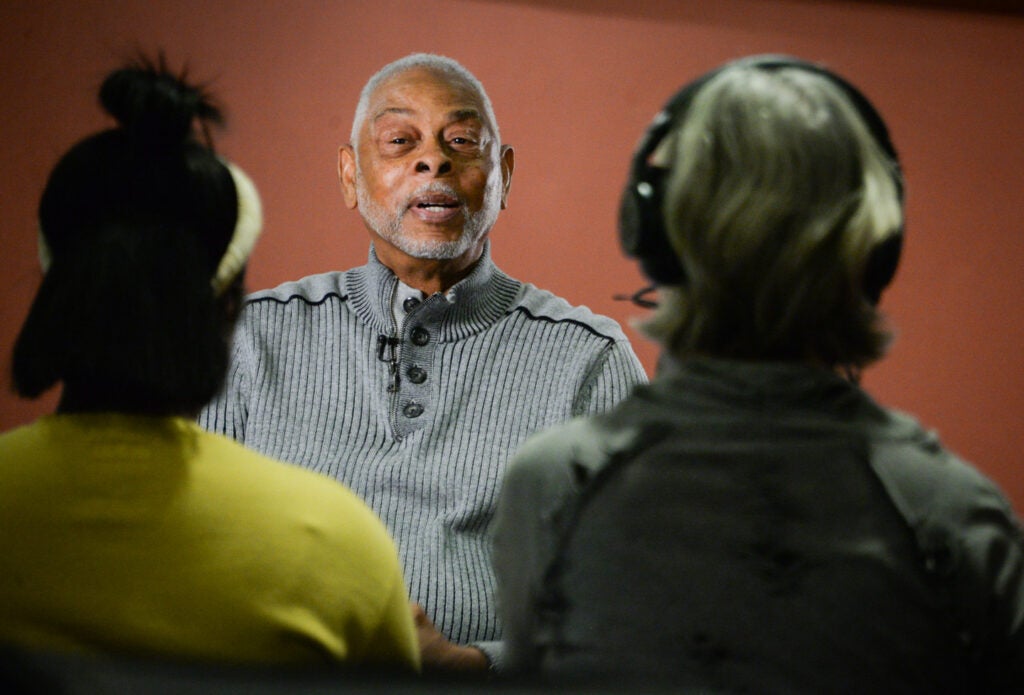
Why is what happened in 1961 in Paris, or in Frankfort’s Grand Theatre for decades, important to FRANK. readers in 2024? Perhaps a slightly altered version of the quote attributed to the philosopher George Santayana says it best: “Those who do not learn from history are doomed to repeat it.” (Santayana’s original words were, “Those who cannot remember the past are condemned to repeat it.”)
“Stories from the Balcony” is an important effort to reveal the realities of segregation in our community’s past. And, for better or worse, the influence of the past often lingers long after the days of yesteryear have vanished. Some hold that the past can be even more powerful than the memories. In his novel “Requiem for a Nun,” the famous American novelist William Faulkner wrote “The past is never dead. It’s not even past.”
If you would like to play a role in revealing a segment of Frankfort’s past by helping fund Phase II of “Stories From the Balcony,” a potentially powerful, impactful and far-reaching documentary, visit https://grandtheatre.thundertix.com/donations/new?campaignid=2316 or contact the Grand Theatre at 502-352-7469. For more information, follow the project on Facebook @StoriesFromTheBalcony.
Those interviewed in the documentary include:
- Vinson Parsons
- Michael Fields
- Connie Parrish
- Taylor Hay and Ben Moore
- Sheila Mason Burton
- Van Warren
- Gladys Parrish
- Eugene Parrish
- Barbara Tandy
- Judy Clark & Jane Downey & Pat Stewart
- Virginia Brooks
- Bill Crumbaugh
- Dorothy Hudson Switzer
- Hugh Hudson
- Norman Wayne Moore
- Jeff Bradshaw
- Johnny Sykes
- Romania Marshall
- Clarence Metcalf
- Mary Washington
- Mattie Davis
- Harriet Davis
- Katherine Graham
- Teresa Graham
- Helen Edwards
- Marie Ellis
- Mary Tillman
- Benjamin Mapp
- Camellia Susie Million Tinsley
- John Baughman
- Teresa Harris
- Ike Fields
- Billie Hayes
- Mike Fields
- Rev. James Thurman
- Marjorie Doneghy Willis
- Freddie Johnson
- Bobby Jones
- Anna Dolores Coleman
- Celina Collins Bean
- Dr. Johnny Sheppard
- Barbara Jones Lester
- Shirley Jones
